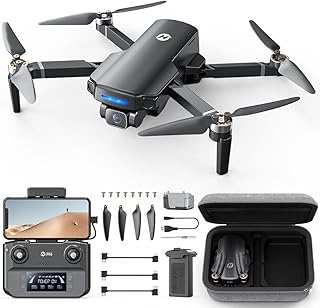Navigating the Legal Landscape of Drone Operations: A Guide
The use of drones, also known as Unmanned Aerial Vehicles (UAVs), is rapidly expanding across various sectors, from aerial photography and videography to delivery services and agricultural monitoring. However, navigating the complex legal landscape surrounding drone operations is crucial to ensure compliance and prevent potential legal issues.
Here's a breakdown of key legal considerations for drone operations:
1. Federal Regulations:
* Federal Aviation Administration (FAA): The FAA regulates all civil aircraft operations, including drones.
* Part 107: Small Unmanned Aircraft Systems (UAS) Rule: This rule establishes operational requirements for small unmanned aircraft systems weighing less than 55 pounds, including:
* Pilot Certification: Requires operators to hold a Remote Pilot Certificate with a minimum age of 16.
* Aircraft Registration: Drones must be registered with the FAA.
* Visual Line of Sight (VLOS) Operations: Drones must be kept within the operator's visual line of sight, except in specific circumstances with FAA authorization.
* Flight Limitations: Restrictions on flight over people, at night, and near airports.
* Beyond Visual Line of Sight (BVLOS) Operations: Requires specific authorizations from the FAA and adherence to stringent safety protocols.
* National Airspace System (NAS) Integration: The FAA is developing regulations for the safe integration of drones into the NAS, potentially allowing for more complex and autonomous operations.
2. State and Local Regulations:
* State Laws: Some states have enacted laws regarding drone operations, often covering privacy, property rights, and public safety.
* Local Ordinances: Cities and counties may have local ordinances restricting drone flights in certain areas, such as parks, schools, and private property.
3. Privacy Laws:
* Fourth Amendment: The Fourth Amendment protects against unreasonable searches and seizures. Drone operations may raise privacy concerns, particularly when capturing images or video of private property.
* State Privacy Laws: Some states have specific laws regarding privacy and drone use, such as restrictions on capturing images of individuals without their consent.
* European Union's General Data Protection Regulation (GDPR): Applies to data processing of individuals within the EU, including data collected by drones.
4. Property Rights:
* Trespassing: Flying a drone over someone's property without their permission could be considered trespassing, particularly if it interferes with their use and enjoyment of the property.
* Air Rights: Owners have rights to the air space above their property, although the extent of those rights is subject to legal interpretation.
* Property Damage: Drones can cause property damage, such as to fences, roofs, or crops. Operators are liable for any damages caused by their drone.
5. Liability and Insurance:
* Operator Liability: Drone operators are liable for any damages or injuries caused by their drone, including negligence or violation of regulations.
* Insurance: It's essential to have appropriate liability insurance to cover potential risks associated with drone operations.
* Product Liability: Manufacturers may be held liable for defects in drones that cause harm.
Navigating the Legal Landscape:
* Consult with legal counsel: Seek legal advice from an attorney experienced in drone law to ensure compliance with all relevant regulations.
* Stay informed: Keep up to date with evolving regulations, technological advancements, and industry best practices.
* Develop a safety plan: Establish comprehensive safety protocols for drone operations, including flight planning, risk assessment, and emergency procedures.
* Respect privacy and property rights: Always obtain permission before flying a drone over private property or capturing images of individuals.
* Maintain proper documentation: Keep records of all drone operations, including flight logs, maintenance records, and authorizations.
Conclusion:
The legal landscape for drone operations is constantly changing. By understanding the relevant regulations and taking proactive steps to ensure compliance, drone operators can minimize risks and maximize the benefits of this exciting technology.


